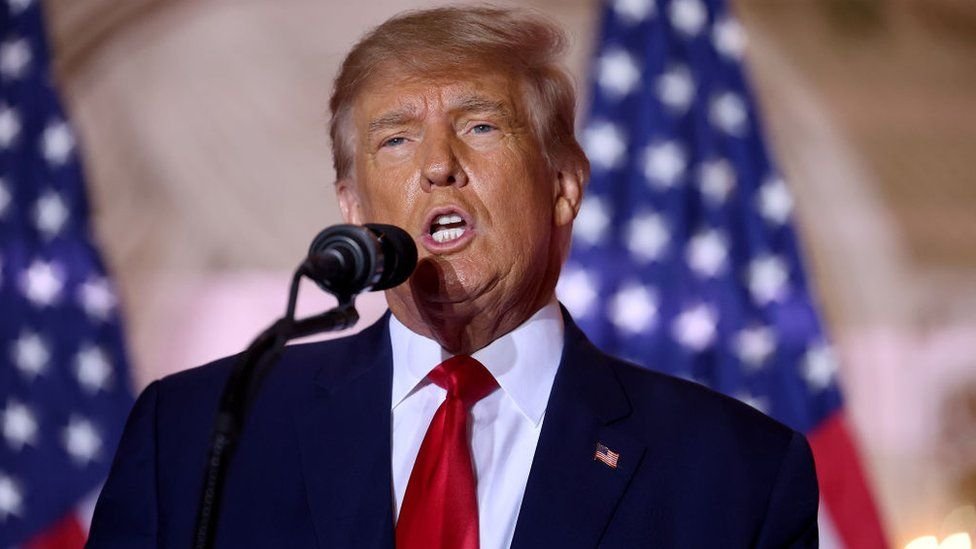President Donald Trump’s sweeping second-term agenda, which has transformed the political landscape over the past ten months, faces its first major electoral test Tuesday as voters head to the polls in a series of critical off-year elections across the country.
The contests ranging from gubernatorial races in Virginia and New Jersey to a heated New York City mayoral battle and a controversial redistricting initiative in California will serve as a national referendum on Trump’s dominance and the direction of his “Make America Great Again” movement as both parties gear up for the 2026 midterms and the distant yet looming 2028 presidential race.
Democrats, shut out of power in Washington since January, have spent much of the year mobilizing against Trump’s aggressive policy moves, filing lawsuits, staging congressional speeches, and organizing mass protests. But the Nov. 4 elections represent the first measurable test of how voters feel about Trump’s reshaping of American governance.
“In every race, Donald Trump looms large,” said Matthew Dallek, a historian and professor of political management at George Washington University. “He’s either the rallying cry for Republicans or the warning siren for Democrats.”
Dallek noted that Democratic contenders such as Virginia’s Abigail Spanberger and New Jersey’s Mikie Sherrill both veterans of the 2018 “blue wave” that sought to contain Trump’s first-term power “embody the first wave of political resistance to Trump.” Their potential victories, he said, could signal that voters still resonate with moderate, pro-security, law-and-order Democrats who appeal to centrists uneasy with Donald Trump’s approach.
The Democratic Party, however, faces a complex identity test. While Spanberger and Sherrill represent the centrist, establishment wing of the party, New York Assemblyman Zohran Mamdani a socialist-aligned progressive running for mayor has energized the left with his populist message of affordability and class reform.
Mamdani, 34, has captured national attention with his calls to tackle rising living costs and rein in billionaires’ influence over politics. His surge has divided Democratic leaders including House Minority Leader Hakeem Jeffries, who reluctantly endorsed him after pressure from the party’s base.
“We’re living in an outsider moment,” said Adam Green, co-founder of the Progressive Change Campaign Committee. “Today’s politics are not about left versus right they’re about outsider rage versus insider complacency.”
A Mamdani victory, especially if achieved with over 50 percent of the vote, could embolden progressives nationwide to take even bolder populist stances heading into the 2026 midterms. But a strong showing by centrists like Sherrill and Spanberger would reinforce the case for moderation, particularly in swing states and suburbs.
On the Republican side, Trump’s allies see the elections as a crucial opportunity to demonstrate the durability of the MAGA coalition without the president’s direct involvement.
New Jersey’s gubernatorial race offers their best hope. GOP nominee Jack Ciattarelli, who narrowly lost in 2021, has now fully embraced Trump and the MAGA movement. Although Donald Trump has largely stayed off the campaign trail in 2025, Ciattarelli has emphasized his close ties to the president, telling reporters he speaks with Donald Trump “regularly.”
“If Ciattarelli wins, it would make him an instant MAGA star,” said conservative radio host John Fredericks. “He’d prove that even in blue states, Trumpism can win.”
In Virginia, however, Democrats are favored. Republican Lt. Gov. Winsome Earle-Sears faces an uphill battle against Spanberger, while GOP strategists are redirecting resources toward down-ballot races such as the attorney general contest, where Jason Miyares has gained momentum.
Meanwhile, in California, Democrats are pushing a ballot initiative that could reshape Congress for years to come. Proposition 50 would allow state legislators rather than an independent commission to redraw congressional maps, potentially creating five new Democratic-leaning districts.
Gov. Gavin Newsom has spearheaded the effort, framing it as a counteroffensive to Republican-led redistricting in several GOP-controlled states.
“This is about fairness, representation, and standing up to manipulation,” Newsom said at a recent rally.
Polls suggest Proposition 50 is likely to pass, but analysts warn that anything short of a decisive win could tarnish Newsom’s growing national profile as he quietly maneuvers for a possible 2028 presidential run.
Several other Democrats are using the off-year elections to raise their visibility ahead of future White House bids.
Former Vice President Kamala Harris has maintained a low political profile during her book tour but has not ruled out another presidential run. Rep. Alexandria Ocasio-Cortez has actively campaigned for Mamdani, signaling her growing influence among younger voters, while Kentucky Gov. Andy Beshear has lent his support to Spanberger’s campaign in Virginia as he prepares to lead the Democratic Governors Association in 2026.
In Pennsylvania, Gov. Josh Shapiro widely viewed as a potential 2028 contender has been leveraging his 60% approval rating to influence key state Supreme Court races. Shapiro has urged voters to reelect three liberal-leaning justices, calling the contests a “referendum on freedom.”
“They’ve proven we can count on them to protect a woman’s access to abortion and stand up for all our freedoms,” Shapiro said in a recent television ad.
Political forecasters largely predict Democratic victories across most races, a scenario that would signal growing fatigue with Trump’s hardline tactics. But a surprise Republican win particularly in New Jersey could dramatically shift the national narrative and reinvigorate GOP morale.
“If Democrats don’t win big in both states, it’s blunted,” Fredericks said. “The narrative changes overnight from ‘Trump is finished’ to ‘Trumpism is stronger than ever.’”
As the polls close Tuesday night, the results will offer the clearest signal yet of where the American electorate stands not just on Donald Trump’s second-term agenda, but on the future of both parties as they prepare for the next great political reckoning in 2026 and beyond.



